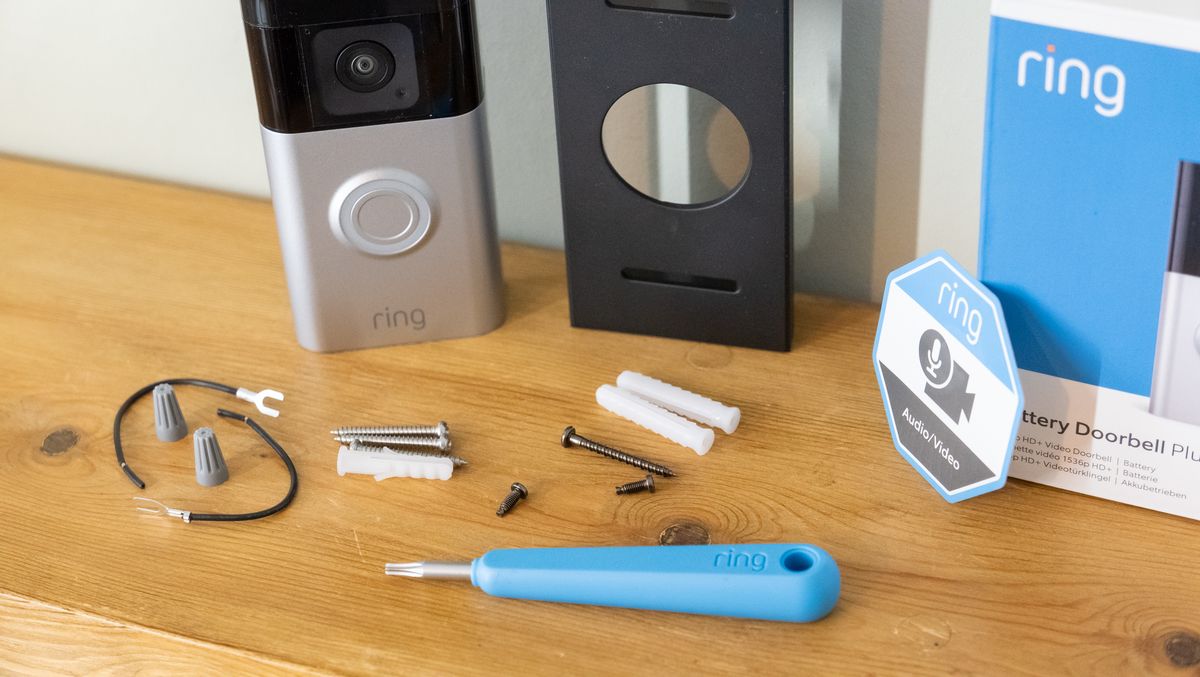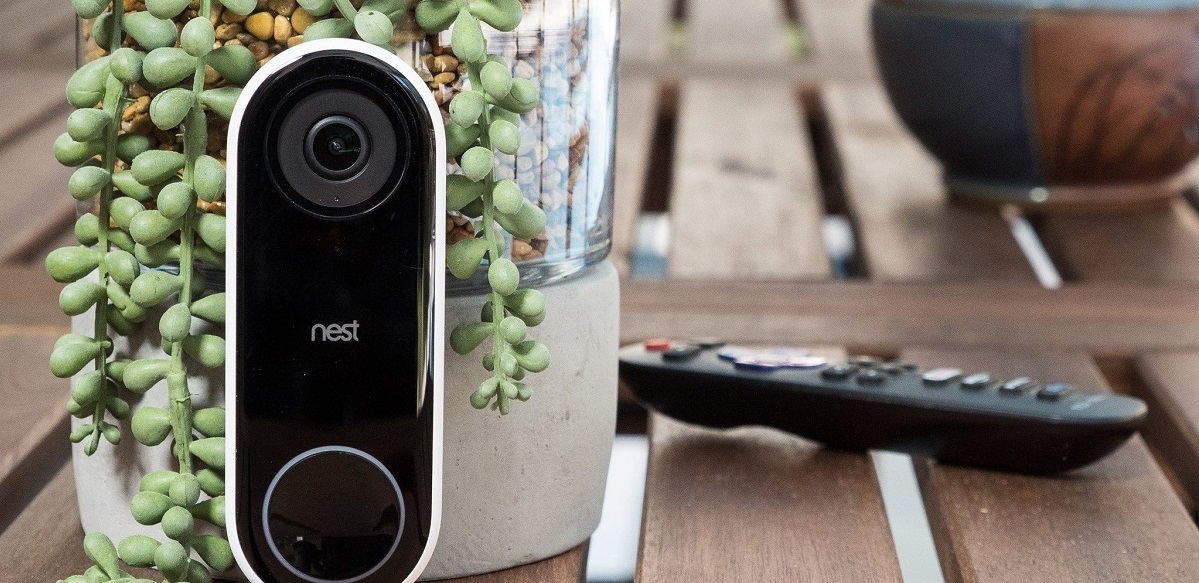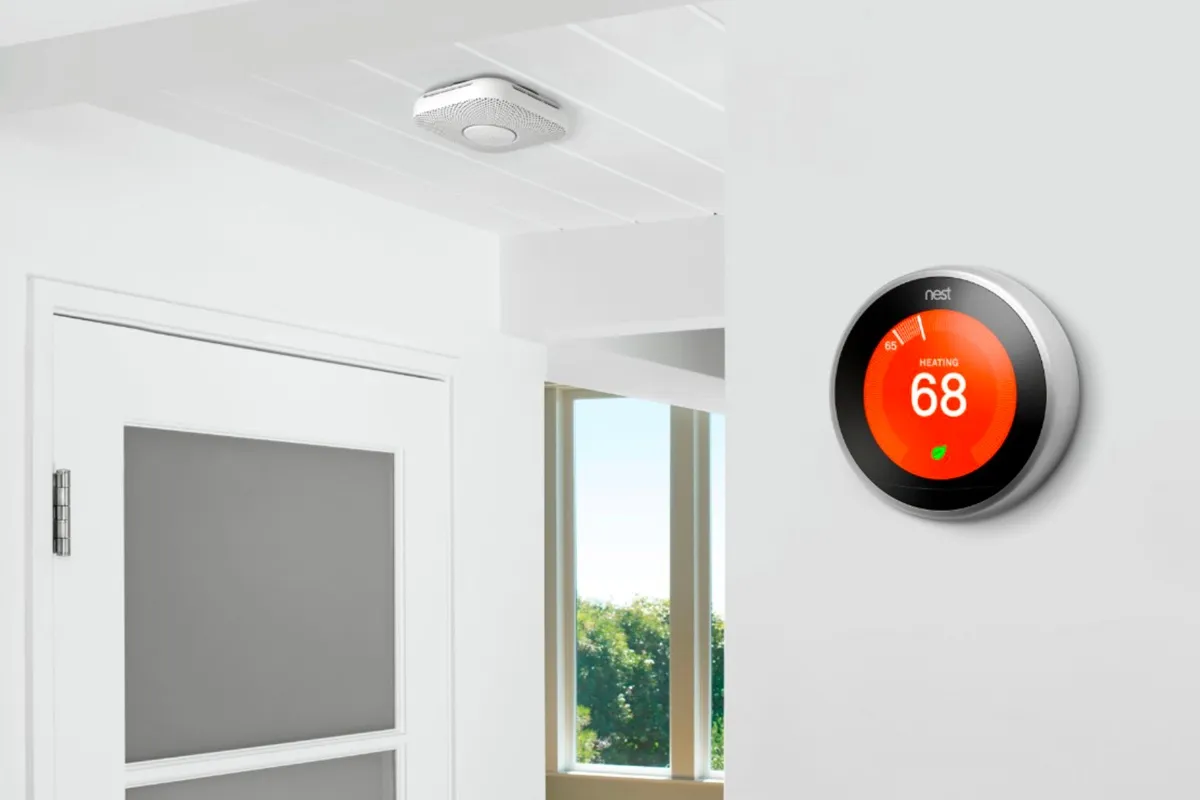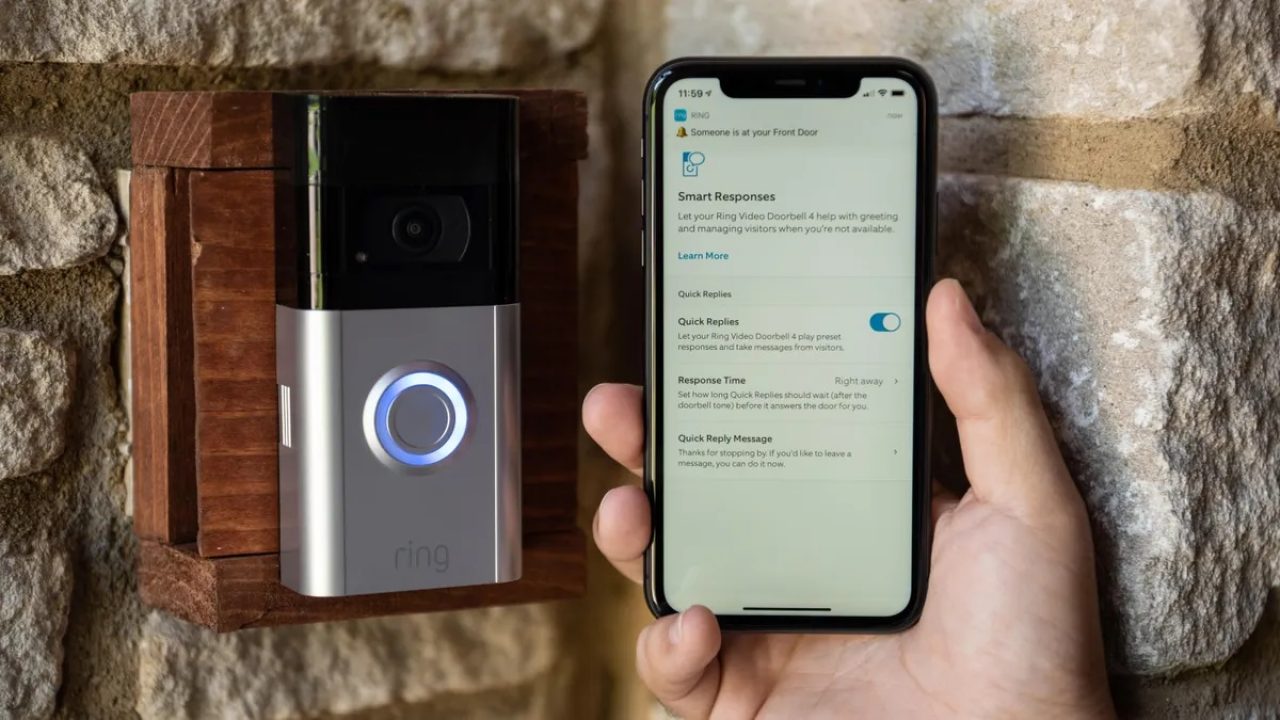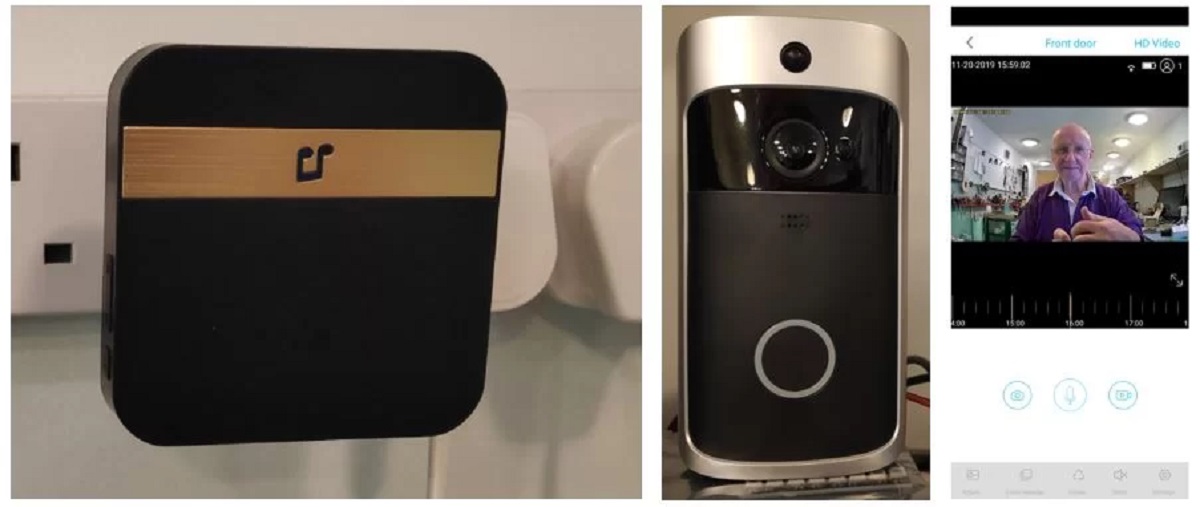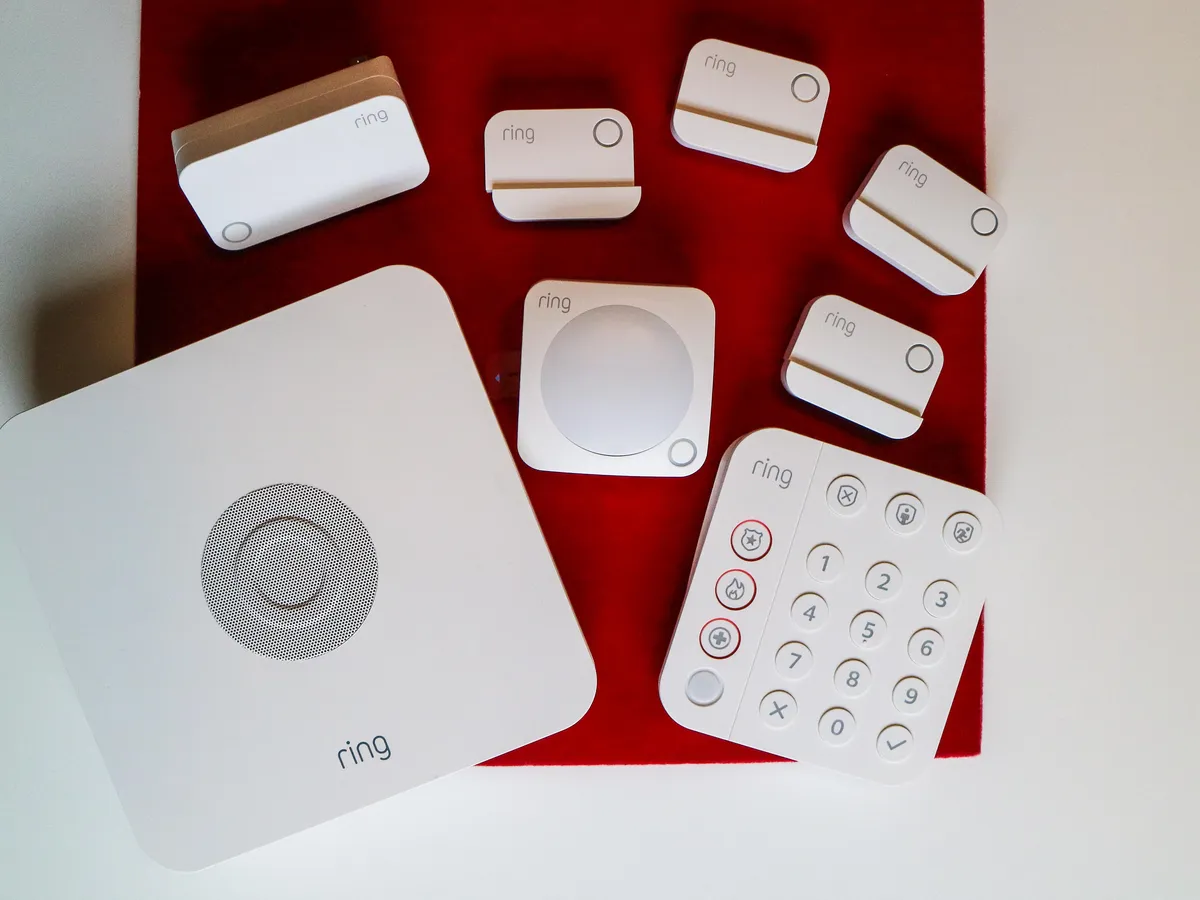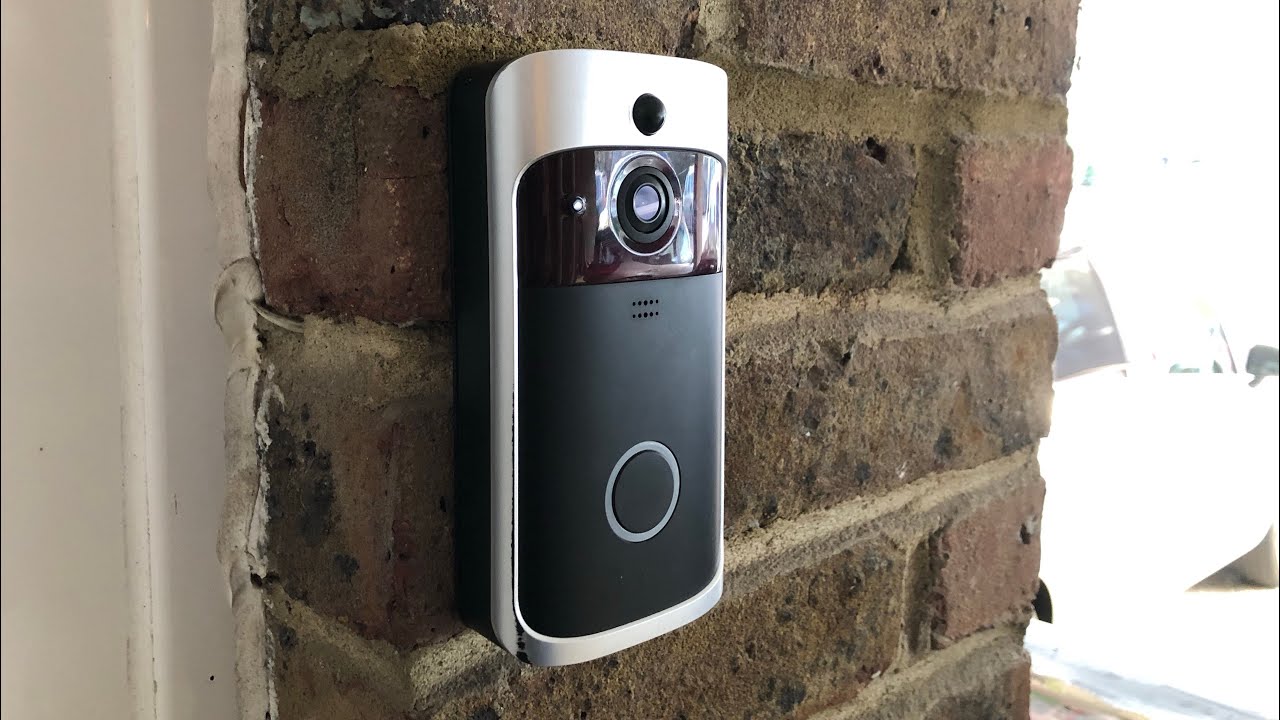Introduction
Welcome to the world of smart video doorbells! Gone are the days of straining to see who’s at your door through a tiny peephole or relying on a traditional doorbell to alert you to visitors. With the advent of smart home technology, video doorbells have become a game-changer in home security and convenience.
So, what exactly is a smart video doorbell? It is a device that combines a doorbell with a built-in camera, allowing you to see and interact with whoever is at your doorstep, whether you’re at home or away. These innovative devices offer a range of features, including live video streaming, two-way audio communication, motion detection, and even night vision capabilities.
Why should you consider installing a smart video doorbell? Well, apart from the obvious convenience of being able to see who’s at your door without getting up from the couch or while you’re away, these devices provide an added layer of security for your home. They act as a deterrent to potential intruders and provide invaluable evidence in the event of any suspicious activity.
Additionally, smart video doorbells offer you peace of mind by allowing you to monitor deliveries, speak to visitors, or even keep an eye on your kids playing in the yard. They can also help you avoid unwanted solicitors or surprise guests.
As with any smart device, choosing the right smart video doorbell for your needs can be overwhelming. With a wide range of brands, features, and price points available, it’s important to do your research and consider your specific requirements. From video quality and camera field of view to compatibility with your smartphone and integration with other smart home devices, there are several factors to consider before making your purchase.
In this guide, we’ll walk you through the process of selecting, installing, and setting up your smart video doorbell. Whether you’re a tech-savvy homeowner or just starting to dip your toes into the world of smart home technology, you’ll find all the information you need to make the most of this innovative device.
What is a smart video doorbell?
A smart video doorbell is a modern home security device that combines the functionality of a traditional doorbell with a built-in camera and smart connectivity features. It allows you to see and communicate with visitors at your doorstep from anywhere using your smartphone or other compatible smart devices.
Unlike traditional doorbells that simply ring when pressed, a smart video doorbell provides you with a real-time video feed of your front door area. Equipped with a high-definition camera, it captures clear and detailed footage of anyone approaching your home. This not only allows you to identify visitors but also provides an added layer of security by recording potential intruders or suspicious activities.
One of the key benefits of a smart video doorbell is the ability to remotely monitor your doorstep even when you’re not at home. By connecting the device to your Wi-Fi network and downloading the accompanying mobile app, you can receive instant notifications on your smartphone whenever someone rings the doorbell or triggers the built-in motion sensors.
When a visitor presses the doorbell or when motion is detected, the smart video doorbell sends a notification to your mobile device. You can then access the live video stream from the camera and have a two-way conversation with the person at your door through the built-in microphone and speaker. This allows you to communicate with delivery personnel, instruct them where to leave packages, or even ward off potential burglars by giving the impression that you’re at home.
In addition to live video streaming and two-way audio, many smart video doorbells offer other advanced features. These include motion detection zones that allow you to define specific areas where motion should be detected, night vision that provides clear images even in low-light conditions, and cloud storage to store and access recorded video footage.
Smart video doorbells can be integrated with other smart home devices and systems, allowing for a more comprehensive home security setup. For example, you can link your smart video doorbell with smart locks, so you can remotely unlock the door for approved visitors. Integration with voice assistants like Amazon Alexa or Google Assistant enables hands-free control and seamless operation with other connected devices in your home.
Overall, a smart video doorbell offers convenience, peace of mind, and enhanced security for homeowners. It provides a modern and efficient way to monitor and interact with visitors, ensuring that you’re always aware of who’s at your doorstep, no matter where you are.
Why should you install a smart video doorbell?
Installing a smart video doorbell in your home offers numerous benefits that go beyond just replacing a traditional doorbell. Here are some compelling reasons why you should consider adding this smart home device to your security arsenal:
Enhanced Home Security: A smart video doorbell acts as a proactive deterrent to potential intruders. With its built-in camera and motion detection capabilities, it captures any activity at your doorstep. This provides you with valuable evidence in case of any attempted break-ins or suspicious activity, and can help law enforcement in identifying perpetrators.
Remote Monitoring: One of the biggest advantages of a smart video doorbell is the ability to remotely monitor your doorstep. Whether you’re at work, running errands, or on vacation, you can easily check on your front door activity through the mobile app on your smartphone. This provides peace of mind knowing that you can always keep an eye on your home, no matter where you are.
Package Delivery Convenience: With the rise of online shopping, package theft has become a growing concern. A smart video doorbell allows you to see when packages are delivered, ensuring they are safe on your doorstep until you can retrieve them. You can also communicate with delivery personnel and provide specific instructions on where to leave packages.
Visitor Interaction: Traditional doorbells don’t allow for much interaction with visitors, especially if you’re not at home. With a smart video doorbell, you can have two-way audio conversations through the built-in speaker and microphone. This is useful for speaking to delivery drivers, instructing guests on where to go, or even scaring away suspicious individuals.
Monitoring Children and Pets: If you have children or pets who spend time in the front yard, a smart video doorbell provides a convenient way to keep an eye on them. You can quickly check the live video feed to ensure they’re safe and where they’re supposed to be. This added level of supervision can bring peace of mind, especially for busy parents.
Integration with Smart Home Systems: Smart video doorbells are often compatible with other smart home devices and systems. You can integrate them with smart locks, allowing you to unlock the door remotely for trusted visitors. They can also be interconnected with other security cameras, sensors, and alarms to create a comprehensive home security solution.
Safety during COVID-19: In the midst of the COVID-19 pandemic, minimizing physical contact with outsiders has become crucial. A smart video doorbell reduces the need for face-to-face interactions with delivery personnel or strangers at the door. You can communicate and instruct them remotely, reducing the risk of exposure to viruses and maintaining social distancing practices.
Energy Efficiency: Some smart video doorbells have advanced power-saving features. They only activate the camera and motion detection when needed, reducing energy consumption and prolonging battery life. This makes them an eco-friendly addition to your home security system.
Overall, a smart video doorbell offers convenience, peace of mind, and an additional layer of security for your home. It allows you to stay connected with your doorstep, remotely monitor visitors, and proactively deter potential intruders. With its integration capabilities and advanced features, it’s a valuable addition to any modern home security setup.
Choosing the right smart video doorbell for your needs
With a wide range of smart video doorbells available in the market, choosing the right one for your needs can be overwhelming. Consider the following factors to help you make an informed decision:
Video Quality: Look for a doorbell with high-definition (HD) video resolution. This ensures clear and detailed footage, allowing you to easily identify faces and other important details. Opt for a doorbell with at least 1080p resolution for the best results.
Field of View: The field of view (FOV) determines how much area the camera can capture. A larger FOV means a wider angle of view, providing better coverage of your doorstep and surrounding areas. Look for a doorbell with a FOV of at least 150 degrees for comprehensive monitoring.
Integration and Compatibility: If you already have a smart home system or other smart devices, choose a doorbell that is compatible with your existing ecosystem. This allows you to integrate and control multiple devices from a single platform, enhancing the functionality and convenience of your smart home setup.
Power Options: Consider the power source for the doorbell. Some models are battery-powered, while others require wiring to your existing doorbell wiring or an electrical outlet. Battery-powered doorbells offer the advantage of easy installation and flexibility, but may require more frequent battery replacements.
Two-Way Audio: Check for the availability of clear two-way audio communication. This allows you to speak to visitors at your doorstep using a built-in microphone and speaker. Ensure that the audio quality is crisp and doesn’t experience any significant delays or interference.
Night Vision: If you want to monitor your front door during nighttime or low-light conditions, choose a doorbell with infrared night vision capabilities. This enables clear visibility even in complete darkness, providing reliable surveillance round the clock.
Cloud Storage: Look for a doorbell that offers cloud storage options for recorded video footage. This ensures that your videos are securely stored and accessible from anywhere, even if the doorbell itself is stolen or damaged. Check the pricing and storage limitations associated with the cloud storage service.
Smart Features: Consider additional smart features that might be important to you. This could include customizable motion detection zones, facial recognition technology, smart alerts, or integration with voice assistants like Amazon Alexa or Google Assistant. Evaluate which features align with your preferences and priorities.
Reviews and Ratings: Before making a final decision, read customer reviews and ratings for the doorbell models you’re considering. Pay attention to feedback regarding reliability, ease of installation, video quality, and overall performance. This will give you valuable insights into real-world experiences with the product.
Budget: Lastly, determine your budget for a smart video doorbell. Prices can vary significantly depending on brand, features, and capabilities. Set a realistic budget and choose a doorbell that offers the best balance between performance and affordability for your specific needs.
By considering these factors, you can narrow down your options and choose the smart video doorbell that best meets your requirements. Remember that every home is unique, so prioritize the features that are most important to you and ensure that the doorbell seamlessly integrates into your existing home security system or smart home ecosystem.
Preparing for installation
Before diving into the installation process of your smart video doorbell, it’s important to properly prepare to ensure a smooth and successful setup. Here are the key steps to take when preparing for the installation:
1. Check compatibility: Start by confirming that your current doorbell wiring, if applicable, is compatible with the smart video doorbell you have chosen. Some doorbells require a wired connection, while others can operate on battery power. Make sure to read the manufacturer’s specifications and requirements before proceeding.
2. Assess Wi-Fi signal strength: The performance of your smart video doorbell heavily relies on a stable and strong Wi-Fi connection. Check the signal strength in the vicinity of your front door to ensure that it’s sufficient for seamless video streaming and communication. If the signal is weak, consider installing a Wi-Fi range extender to improve coverage.
3. Prepare necessary tools: Gather all the necessary tools and equipment needed for the installation. This may include a screwdriver, drill, measuring tape, level, and wire strippers. Ensure that you have the appropriate tools on hand to avoid delays during the installation process.
4. Review manufacturer’s instructions: Familiarize yourself with the manufacturer’s installation instructions that come with your smart video doorbell. Read through the manual carefully to understand the specific steps and requirements for your particular model. Following the manufacturer’s instructions is crucial to ensure a successful installation.
5. Charge or replace batteries (if applicable): If your smart video doorbell is battery-powered, make sure the batteries are fully charged or replace them with fresh ones. This ensures that the doorbell has sufficient power during the installation process and prevents any interruptions or delays caused by low battery levels.
6. Clear the area around the door: Ensure that the area surrounding your front door is clear and accessible. Remove any obstacles, such as decorations or plants, that may obstruct the view or interfere with the installation process. Clearing the area helps to ensure proper positioning of the doorbell and optimal functionality.
7. Verify smartphone compatibility: Confirm that your smartphone or other compatible device meets the minimum system requirements for connecting and controlling the smart video doorbell. Check for compatibility with the operating system version, available storage space, and required app permissions. This ensures a smooth connection and seamless operation between your device and the doorbell.
8. Determine optimal mounting location: Carefully choose the location to mount your smart video doorbell. Consider factors such as visibility of the doorbell, ease of access for visitors, and the camera’s field of view. Ensure that the mounting surface is sturdy and level, as this will affect the stability and performance of the doorbell.
9. Identify power source: If your smart video doorbell requires wiring, locate the existing doorbell transformer or electrical outlet for power supply. If necessary, consult an electrician to ensure the wiring is properly connected and compatible with the doorbell’s power requirements. Follow all safety precautions when working with electrical components.
10. Plan for weather protection: Consider the weather conditions in your area and take appropriate measures to protect your smart video doorbell from rain, snow, or extreme temperatures. Some doorbell models come with weatherproof ratings, while others may require additional protective covers or installation accessories. Ensure that your doorbell is adequately protected from the elements.
By taking the time to properly prepare for the installation of your smart video doorbell, you can help ensure a successful and hassle-free process. Following these steps will help you avoid common pitfalls and ensure that your doorbell functions optimally, providing the desired level of security and convenience for your home.
Installing the smart video doorbell
Once you’ve prepared for the installation of your smart video doorbell, it’s time to begin the actual setup process. Follow these general steps to ensure a successful installation:
1. Turn off power: If your smart video doorbell requires wiring, turn off the power supply at the circuit breaker before proceeding. This is essential for safety and to prevent any electrical mishaps during the installation process.
2. Remove existing doorbell (if applicable): If you have a traditional doorbell already installed, carefully remove it from the mounting. Disconnect any wiring connected to the old doorbell and label the wires for easy identification later on.
3. Mount the bracket: Attach the mounting bracket to the desired location for your smart video doorbell. Use a screwdriver or drill to securely fasten the bracket to the wall or door frame. Ensure that the bracket is level to ensure proper alignment of the doorbell.
4. Connect the wiring (if applicable): If your smart video doorbell requires wiring, follow the manufacturer’s instructions to connect the doorbell wires to the existing doorbell transformer or electrical outlet. Strip the ends of the wires if necessary and securely attach them to the appropriate terminals.
5. Attach the smart video doorbell: Carefully attach the smart video doorbell onto the mounting bracket. Align the screw holes on the doorbell with the holes on the bracket and use the provided screws to secure it in place. Ensure that the doorbell is tightly fastened and level.
6. Test the installation: Turn on the power supply or insert the batteries, depending on the doorbell’s power source. Verify that the smart video doorbell is functioning properly by pressing the doorbell button or triggering the motion sensors. Ensure that the live video feed is visible on your smartphone or compatible device.
7. Adjust the camera angle: Fine-tune the camera angle to achieve the optimal field of view. Most smart video doorbells have adjustable camera angles that can be adjusted up or down. Experiment with the positioning to make sure you’re capturing the desired area in front of your door.
8. Secure any loose cables: Once the doorbell is securely installed, ensure that any excess wiring or cables are neatly tucked away and secured. This reduces the risk of accidental damage and keeps the installation clean and tidy.
9. Install any additional accessories: Depending on the model of your smart video doorbell, you may have the option to install additional accessories. This could include a protective cover, angle wedges to adjust the viewing angle, or decorative faceplates. Follow the manufacturer’s instructions to install any desired accessories.
10. Test the doorbell and connectivity: Once the installation is complete, test the smart video doorbell again to ensure that all functions are working properly. Verify that you can receive notifications, view the live video feed, and communicate with visitors through the two-way audio feature. Make any necessary adjustments or troubleshoot connectivity issues if needed.
Each smart video doorbell may have specific installation steps, so be sure to consult the manufacturer’s instructions for your particular model. Following these general guidelines will help you successfully install your smart video doorbell and take advantage of its advanced security and convenience features.
Connecting the smart video doorbell to your smartphone
Once your smart video doorbell is installed, the next step is to connect it to your smartphone or other compatible device. This allows you to receive real-time notifications, access the live video feed, and control the settings of your doorbell. Follow these steps to establish the connection:
1. Download the manufacturer’s app: Visit the app store on your smartphone and search for the app associated with your smart video doorbell. Download and install the app onto your device. Make sure to choose the correct app provided by the manufacturer of your doorbell model.
2. Create an account: Launch the installed app and create a new account if prompted. Follow the instructions to provide the required information, including your email address and a secure password. This account will be used to login and access the features of the app.
3. Connect to Wi-Fi: In the app settings, select the option to connect your smart video doorbell to your home’s Wi-Fi network. Follow the on-screen instructions to enter your Wi-Fi network name (SSID) and password. Ensure that the doorbell is within range of your Wi-Fi signal for a reliable connection.
4. Pair the doorbell with the app: Depending on the model, you may need to activate pairing mode on your smart video doorbell. This is usually done by pressing and holding a designated button or following a specific sequence of actions. Consult the manufacturer’s instructions for the exact steps required.
5. Scan the QR code (if applicable): Some smart video doorbells may require scanning a QR code on the device or in the app to establish the connection. Follow the instructions provided to scan the QR code using your smartphone’s camera. This step helps ensure a secure and seamless pairing process.
6. Confirm the connection: Once the pairing process is complete, the app should detect and confirm the connection to your smart video doorbell. You may be prompted to customize settings such as motion detection sensitivity, notification preferences, or video recording options. Adjust these settings according to your preferences.
7. Test the connectivity: To ensure a successful connection, test the connectivity between your smartphone and the smart video doorbell. Trigger the doorbell button or the motion sensors to verify if you receive real-time notifications on your smartphone. Access the live video feed to confirm that you can see the camera view and use the two-way audio feature to communicate with visitors.
8. Enable remote access: If you want to access the smart video doorbell remotely when you’re away from home, enable remote access within the app settings. This may require granting permissions, such as allowing the app to use cellular data or access your device’s location. Follow the instructions provided to set up remote access, if desired.
9. Troubleshoot connectivity issues: If you encounter any connectivity issues, ensure that your smartphone is connected to a stable Wi-Fi or cellular network. Double-check that your smart video doorbell is still connected to your home’s Wi-Fi network. Restarting the app, rebooting your smartphone, or power cycling the doorbell may also help resolve connectivity problems.
10. Explore additional features: Once the connection is established, take some time to explore the additional features and customization options available within the app. This may include adjusting the camera settings, setting up motion detection zones, reviewing recorded video footage, or integrating the doorbell with other smart home devices or voice assistants.
By following these steps, you can successfully connect your smart video doorbell to your smartphone or other compatible device. This allows you to access and control the features of your doorbell from anywhere, enhancing the security and convenience of your smart home system.
Adjusting video doorbell settings
After connecting your smart video doorbell to your smartphone, you have the option to adjust various settings to customize your experience and meet your specific needs. Here are the key settings you can typically adjust:
1. Motion detection sensitivity: Most smart video doorbells have adjustable motion detection settings. You can control the sensitivity of the motion sensors to determine the level of motion required to trigger a notification. Fine-tuning this setting helps reduce false alarms caused by irrelevant movements, such as passing cars or swaying trees.
2. Motion detection zones: Some doorbell models allow you to define specific areas within the camera’s field of view where motion should be detected. This feature allows you to limit notifications to certain zones, such as your doorstep or walkway, while ignoring areas that are not of interest. Adjust these zones to capture the desired activity and avoid unnecessary alerts.
3. Notification preferences: Customize how and when you receive notifications from your smart video doorbell. You may choose to receive push notifications on your smartphone, email notifications, or both. Adjust the settings to specify the types of events that trigger notifications, such as motion detection or when the doorbell button is pressed.
4. Video quality settings: Depending on the capabilities of your doorbell, you may have options to adjust the video quality. Higher video quality provides more detailed footage but may consume more bandwidth and storage space. Consider your internet connection and storage capacity when selecting the appropriate video quality setting.
5. Recording options: Smart video doorbells often offer different recording options. You may have the choice to manually record videos, enable continuous recording, or have the camera only record when motion is detected. Review the available recording options and select the one that suits your preferences and storage limitations.
6. Two-way audio settings: Access the settings related to the two-way audio feature of your smart video doorbell. Adjust the microphone and speaker volume levels to ensure clear communication with visitors. You may also have the option to enable or disable the audio feature altogether.
7. Night vision settings: If your doorbell has night vision capability, adjust the night vision settings to optimize visibility in low-light conditions. You may be able to control factors such as infrared sensitivity or the use of additional lighting sources. Experiment with these settings to achieve the best possible image quality during nighttime monitoring.
8. Privacy and security settings: Explore the privacy and security settings available for your smart video doorbell. This may include options to disable video recording, set up guest access for temporary sharing of camera access, or enable encryption for added data security. Take advantage of these settings to ensure the privacy and protection of your video feed.
9. Integration with other devices: If your smart video doorbell integrates with other smart home devices, explore the settings related to device integration. You may have the option to pair your doorbell with smart locks, set up automation rules, or connect it to voice assistants like Amazon Alexa or Google Assistant. Follow the manufacturer’s instructions to complete the integration process.
10. Firmware updates: Periodically check for firmware updates for your smart video doorbell. Manufacturers often release updates to improve performance, functionality, and security. Stay up to date by installing the latest firmware to ensure that you have the best possible experience with your doorbell.
By adjusting these settings, you can customize your smart video doorbell to suit your preferences and optimize its performance. Take some time to explore and experiment with the available settings to make the most of your doorbell’s features and enhance the security and convenience it provides for your home.
Testing and troubleshooting
Once you have installed and adjusted the settings of your smart video doorbell, it’s important to test its functionality and troubleshoot any potential issues that may arise. Here are some steps to test and troubleshoot your smart video doorbell:
1. Test the doorbell button: Press the doorbell button to ensure that it triggers the notification on your smartphone or compatible device. Verify that you receive real-time notifications and that the device is functioning as expected. If the doorbell button does not trigger a notification, there may be an issue with the wireless connection or device settings.
2. Test motion detection: Walk in front of the camera and test the motion detection feature. Check if you receive a notification when motion is detected within the defined zones. Adjust the motion detection sensitivity and zones if necessary to reduce false alarms or ensure that all desired motion is captured.
3. Test two-way audio: Initiate a conversation using the two-way audio feature of your smart video doorbell. Speak through your smartphone or compatible device and ensure that the doorbell’s microphone picks up your voice clearly. Listen for any audio distortion or delays during the conversation. Adjust the speaker and microphone volume levels if needed.
4. Check video quality: Access the live video feed from your smart video doorbell and verify that the video quality is clear and of satisfactory resolution. Look for any visual issues, such as pixelation, blurriness, or color distortion. Adjust the video quality settings if available or troubleshoot any connectivity issues that may affect video streaming.
5. Check night vision capability: Test the night vision capability of your smart video doorbell by monitoring the camera feed in low-light conditions or complete darkness. Make sure that the night vision LEDs or infrared sensors are functioning correctly and providing clear visibility. Adjust the night vision settings or troubleshoot any issues with the infrared sensors if necessary.
6. Verify remote access: If you enabled remote access, test the ability to access your smart video doorbell when you’re away from home. Connect to an external Wi-Fi network or switch to cellular data on your smartphone and ensure that you can still receive notifications and access the live video feed from anywhere. Troubleshoot any connectivity issues that may hinder remote access.
7. Check storage and recording: Review the recorded video footage from your smart video doorbell to ensure that it is captured and saved properly. Verify that the storage capacity is sufficient and that the doorbell is recording according to the selected recording options. Troubleshoot any issues related to video storage or recording failure.
8. Address connectivity issues: If you experience connectivity issues with your smart video doorbell, such as frequent disconnections or weak signal strength, try relocating your Wi-Fi router or adding a Wi-Fi range extender to improve coverage. Ensure that your doorbell is within the recommended distance range from the router and that there are no physical obstructions affecting signal strength.
9. Resolve app-related issues: If you encounter any issues with the app associated with your smart video doorbell, such as crashes or unresponsiveness, try clearing the app cache or reinstalling the app. Ensure that you have the latest version of the app installed and that your smartphone’s operating system is up to date.
10. Contact customer support: If you have followed the troubleshooting steps but are still experiencing issues with your smart video doorbell, reach out to the manufacturer’s customer support for further assistance. They can provide specialized guidance, address hardware or software problems, and offer solutions tailored to your specific device model.
By testing the functionality of your smart video doorbell and troubleshooting any issues that arise, you can ensure that the device is operating optimally and providing the desired security and convenience for your home. Regular testing and maintenance help identify and resolve any problems early on, allowing you to fully enjoy the benefits of your smart video doorbell.
Conclusion
Installing a smart video doorbell can greatly enhance your home security and convenience. With its ability to provide real-time video feeds, two-way audio communication, and motion detection capabilities, a smart video doorbell offers you peace of mind and control over who enters your home.
We began by understanding the concept of a smart video doorbell, which combines a doorbell with a camera and smart connectivity features. We explored the reasons why you should consider installing one, including enhanced security, remote monitoring, package delivery convenience, and the ability to keep an eye on your children or pets. We also highlighted the importance of choosing the right smart video doorbell for your specific needs by considering factors such as video quality, field of view, compatibility, power options, and additional features.
Preparing for installation is crucial to ensure a smooth process. We discussed the steps involved in preparing for installation, including checking compatibility, assessing Wi-Fi signal strength, gathering necessary tools, reviewing instructions, and clearing the area around the door. Connecting the smart video doorbell to your smartphone allows you to remotely access and control its features. We provided steps to download the manufacturer’s app, create an account, connect to Wi-Fi, pair the doorbell with the app, and troubleshoot any connectivity issues.
Adjusting the video doorbell settings allows you to customize the device to your preferences. We covered settings such as motion detection sensitivity, motion detection zones, notification preferences, video quality, recording options, two-way audio settings, night vision settings, privacy and security settings, and device integration. By adjusting these settings, you can maximize the performance and functionality of your smart video doorbell.
Testing and troubleshooting are essential to ensure that your smart video doorbell operates as expected. We discussed steps for testing the doorbell button, motion detection, two-way audio, video quality, night vision capability, remote access, recording, and addressing connectivity issues. Troubleshooting includes addressing app-related issues, resolving connectivity problems, and contacting customer support when necessary.
In conclusion, a smart video doorbell is a valuable addition to your home security setup. It provides convenience, peace of mind, and an added layer of protection by allowing you to see and interact with visitors from anywhere. By following the installation steps, adjusting the settings, and performing regular tests and troubleshooting, you can enjoy the full benefits of your smart video doorbell and ensure the safety and security of your home.







